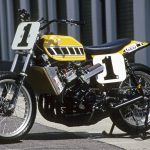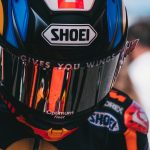Paddock scooters buzz around dropping off and picking up. Riders’ assistants and team personnel carry helmet bags like loaves of bread. Among the small trucks parked in one line of the MotoGP paddock that could be deemed ‘service partners’ at the Sachsenring in Germany, Shoei have their distinctive black/grey race wagon that is overseen and controlled by fast-talking Frenchman Michaël Rivoire. Still the scooters arrive, dispense and depart with Arai and HJC and more suppliers also in close proximity; probably leathers and other errands have to be done at the end of a busy day of practice.
Inside Shoei’s small corner of MotoGP ‘Mica’ – who has been a Shoei employee for two decades and has totalled nine seasons in MotoGP/SBK as the Race Service Technician – shows us his work bay with the lids of Marc Marquez, Bradley Smith, Mattia Pasini and more in state on the shelving behind him and a bench full of intricate tools and decals ready for his work prepping the helmets for the Japanese’s relatively small rider roster.
“From Friday to Sunday I take care of the helmets for twelve riders: two in MotoGP, six in Moto2 and four in Moto3,” says Rivoire, who hails from a town close to Lyon. “Most of the job is in cleaning, drying and replacing tear-offs and changing visor when it is needed. Before the racing season we have to prepare the helmet and that happens in winter testing. We make the main fitting, the tint of visor the rider prefers for the race and the number of tear-offs. The tests are also a time to try new things for certain conditions and we have a strip that prevents rain coming in the visor and doesn’t affect ventilation. The air can come in through the cheekpad but not the water. This was a technical solution we found with my Japanese and American colleagues.”
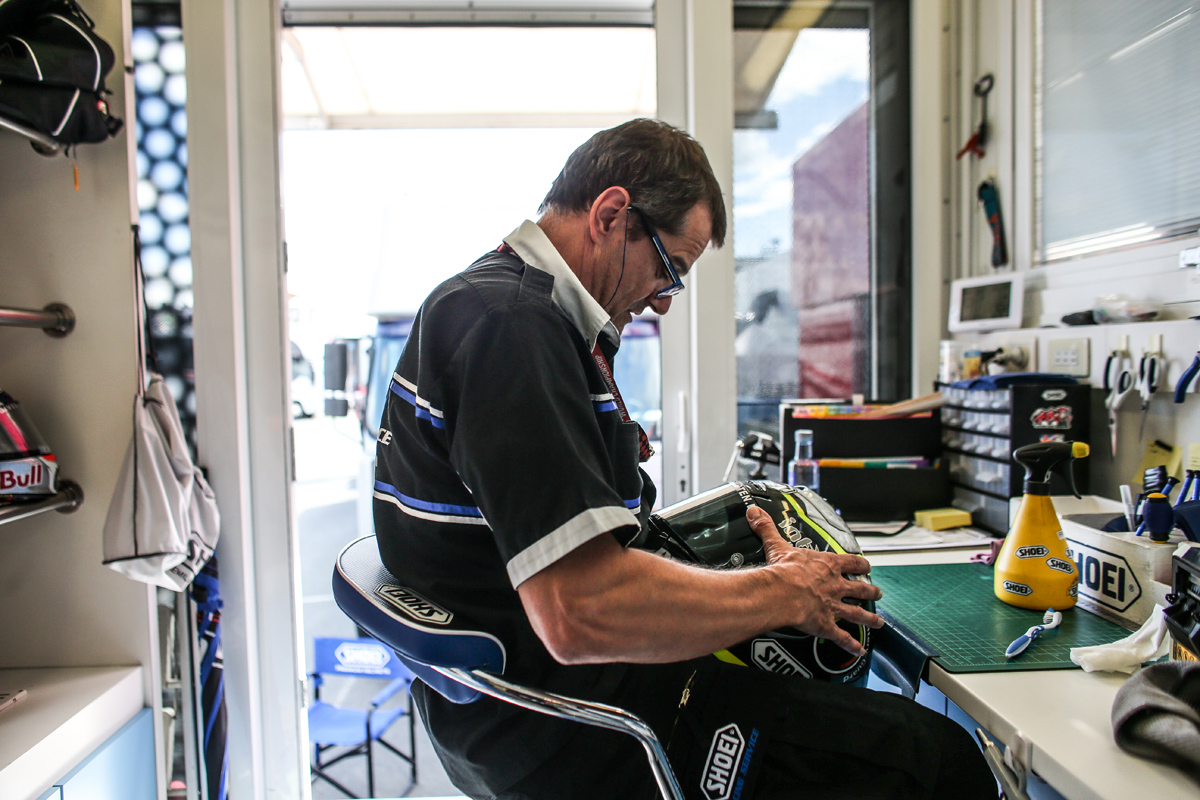
“When it comes to the GPs then on Thursday the preparation based on these settings are done. Each rider will have 4-6 helmets and I’ll ask them to bring three on Thursday which I will make ready for dry, wet and then in consideration of the weather forecast. It is also possible that a helmet will arrive on Thursday that has come directly from a painter so it will be stripped and that is the time when I will make the assembly, glue the rubber and attach everything.”
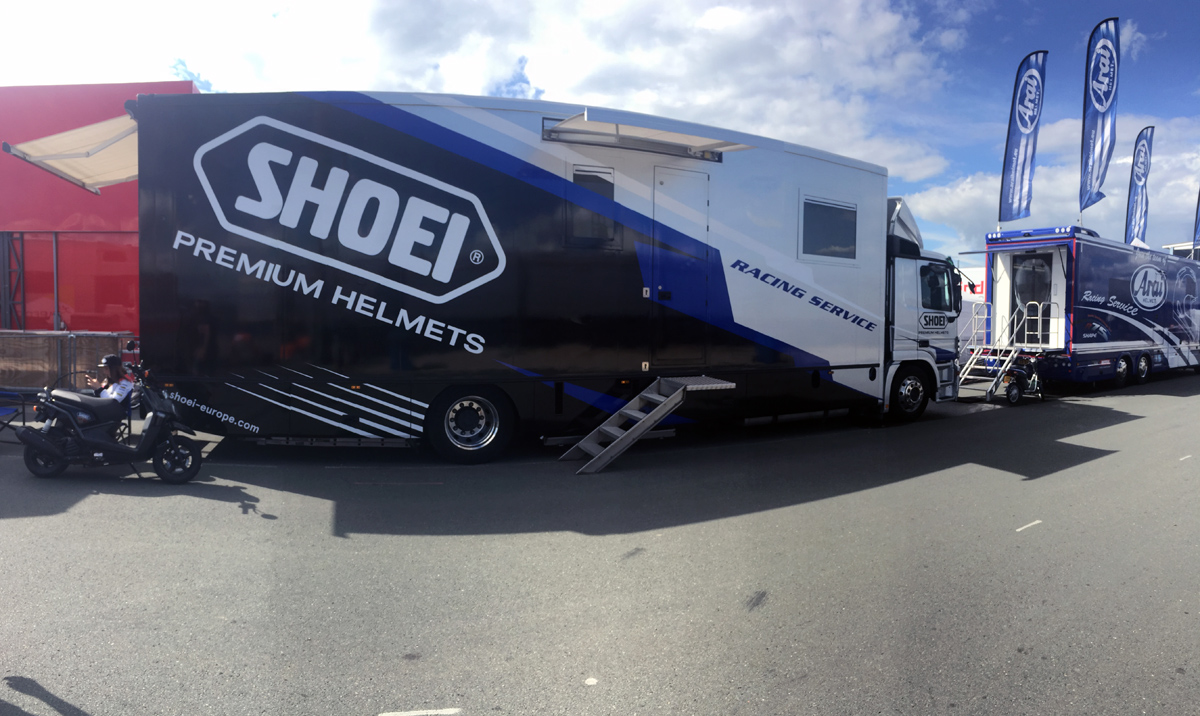
Brands like Alpinestars make a hefty deal about the role that racing plays in the development of their products and how use of materials, prototypes and ideas at the highest levels and extreme conditions can filter into what the customer can use and benefit from on the road or in every day use. It is no surprise that Shoei adopt a similar view in MotoGP but the rate of experimentation is not that severe and even more eye-opening is that fact that the world champion’s X-Spirit III lid features barely any special ‘factory’ components compared to the very same replica found in the shops. We expected the products to be close, after all it is a great marketing angle, but Rivoire is adamant that Shoei’s star riders all use the company’s boxed efforts.
“Development happens throughout the season,” says Rivoire. “My role is primarily geared around race helmets and Japanese R&D will work around all the information I, and my colleagues, can submit. We find some tricks or adjustments, and some can be adapted for production. Sometimes we have special parts to try and the rider will test and we’ll give the feedback.”
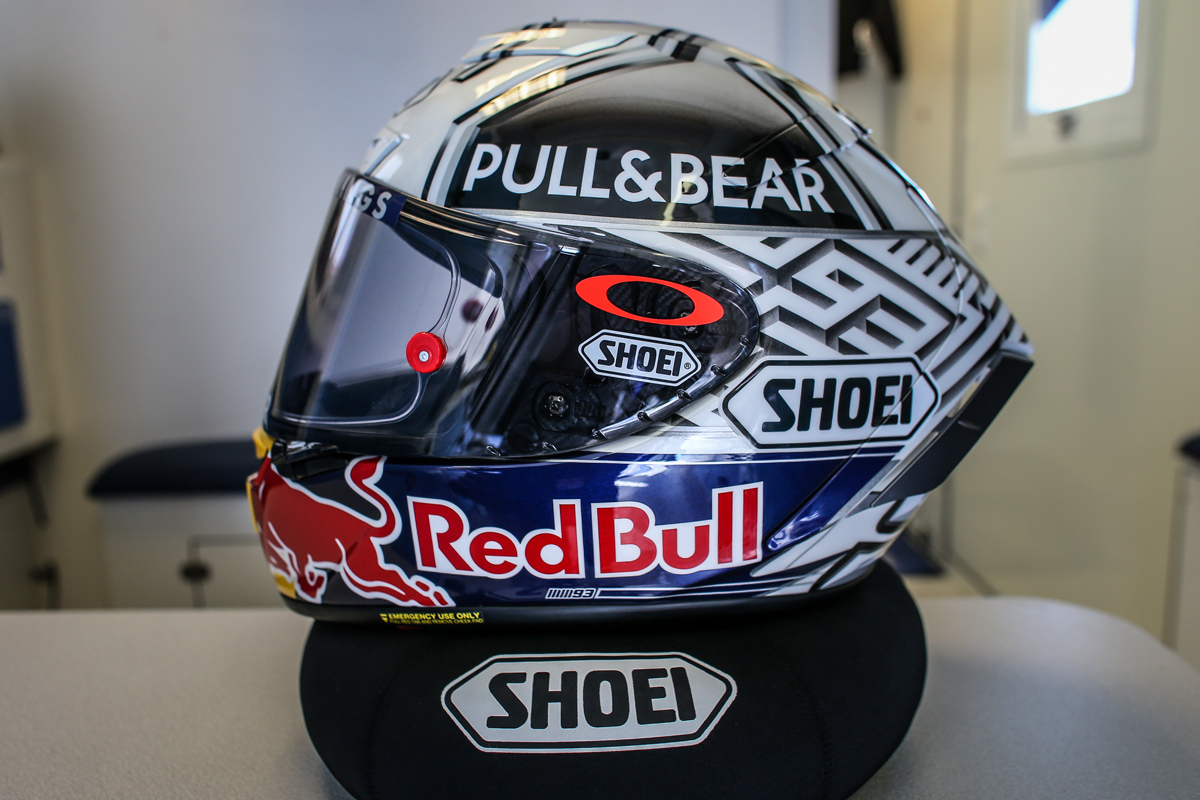
“Marc is very easy to work with and his helmets, all of them actually, are the same that you can find in the shop. The only difference is in the design and the painting,” he adds. “A customer will go into a shop and buy an X-Spirit III (X-Fourteen in the US) small size, just like his, and the only difference is that the padding size will be a standard 35 and Marc uses a 39. You can also buy the pads to have the same fitting if you want! There is zero difference. It happened recently in Superbike actually. A rider crashed in first practice and second practice and then had to go to town close to Imola to buy a stock Shoei; he was a Monster rider so I had some stickers and was able to prepare another helmet to go. The visors are the same but some of the tints are too dark for the road and they are not allowed.”
“To fully assemble one helmet I need almost one hour so if you have to clean and dry helmets for riders in other classes…it means sometimes you miss lunch!”
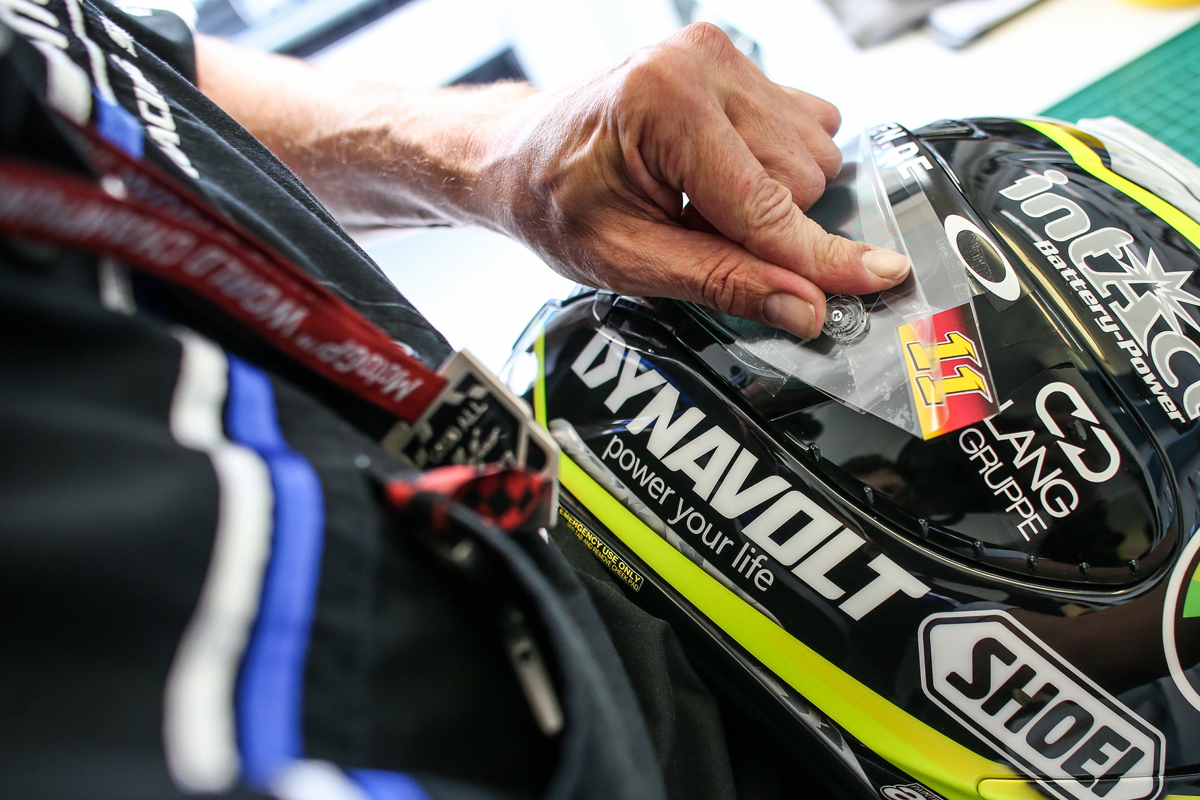
Rivoire’s role is reactive. He has to work and adapt his timetable according to the travails of his riders on track. “Mattia Pasini crashed this morning and I could see from the shell that it was pretty badly damaged. There were some cracks in the liner and, basically, it is ‘dead’, there is no protection on that side and the helmet is finished. I cut the chin strap away, take away padding and it will go back to the rider who will use it as a gift for a sponsor or something similar.”
He also has to cater for some of the unusual configurations of his athlete flock. “Thomas Luthi has an XS size and the biggest pads I have; each time he takes off his helmet I am afraid for his vertebrae! But that is his preference. Some have it very loose and that’s not a problem because we did some tests – thanks to people like Marc, Eugene Laverty, some Japanese riders and even robots that can be pushed into different positions in the wind tunnel – to develop this special edge that helps drive air around the helmet; Adam Norrodin can ride with the helmet quite loose as a result.”
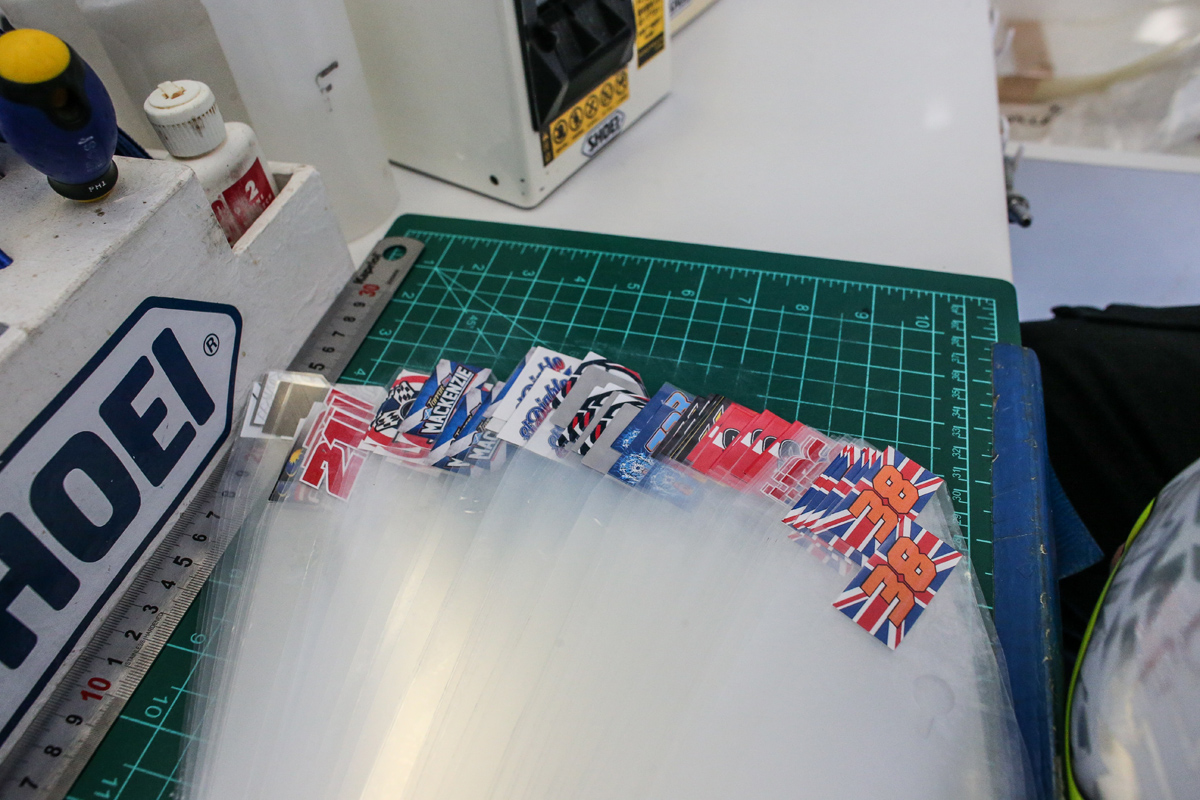
A rider’s lid is often the most recognisable element of their identity while on the bike. Individuals like Marquez and Jorge Lorenzo and especially Valentino Rossi change the look and theme frequently. For Rivoire it can mean a revolving cycle of helmets coming from a spread of countries. “Marc has a special helmet in Spain and it’s designed by David Mata who won a contest two years ago and he understands what Marc wants. I’m then in charge of the painting with a company in France. His special helmet for the Japanese GP is designed with Marc and painted by Shoei and that goes for most of his helmets but other riders have other painters.”
A slice of Rivoire’s role involves representation for Shoei in the biggest international motorcycle racing ‘shop window’; it forms a strut and reasoning for the thousands of kilometres and hundreds of boxes of materials and components he moves through each year to enact the practical provision he provides for the athletes under the company’s umbrella. “My job is part marketing – to show Shoei in the best light and we work on the image of the brand – and another part R&D,” he explains. “So the feedback from the rider is very important. I think we are the company that spends the most when it comes to research and development and for time and money.”
Rivoire is a gregarious character (“Motocross? When some of my riders bring their motocross helmets and they are full of dust – pfff – I am very busy”) and his assertion as to why Shoei is regarded as one of the best and most sought-after helmets in the mark comes just as rapidly and passionately: “Like I said, it is because of the R&D and the commitment of people around this brand.”
Photos by CormacGP

